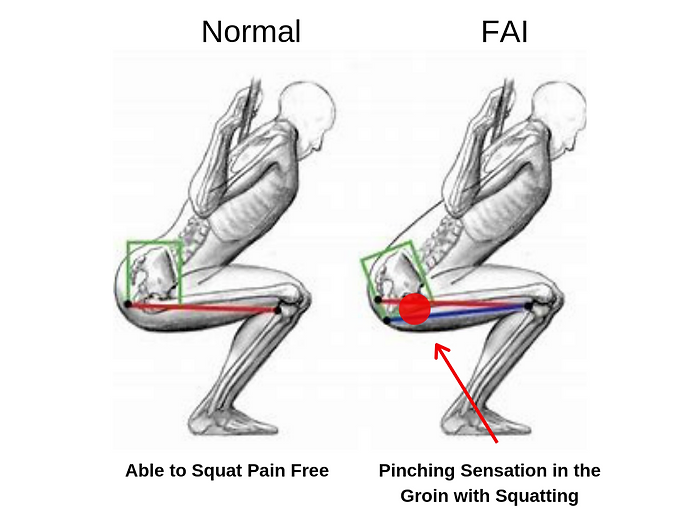Squat Deeper and Pain-Free: How to Beat Femoral Acetabular Impingement Once and For All
Squat Deeper and Pain-Free: How to Beat Femoral Acetabular Impingement Once and For All
August 16, 2024

Excellence, Personalized Care, and Results That Speak Volumes
In a city packed with physical therapy clinics, what makes Vital Six Physical Therapy & Performance stand out?
Start with this: Three Best Rated named Vital Six one of the Top 3 Physical Therapy providers in Kansas City in 2023 and 2024. Not once — twice. That recognition isn’t just handed out — it’s earned through exceptional outcomes, trusted patient care, and a standard of excellence that’s rare in healthcare.
But awards only scratch the surface of what makes this place the go-to physical therapy clinic in Kansas City.
Top 3 Physical Therapy Clinic – Two Years Running
Let’s be real — in a big city like KC, standing out as a Top 3 Physical Therapy Provider is a major accomplishment. To do it two years in a row, and also receive recognition as a Best Business of 2023, is another level.
Vital Six didn’t get there by following the old rules.
They got there by rethinking what physical therapy should be — and then delivering on it every day.
170+ Five-Star Google Reviews & A Flawless Facebook Rating
It’s one thing to have clinical credibility. It’s another thing entirely to have patients consistently singing your praises.
With over 170 five-star reviews on Google and a 5-star rating on Facebook, the community response is loud and clear: Vital Six delivers.
“I’ve never made so much progress in such a short time. Jason helped me identify things that multiple therapists missed.”
“Jason’s personality is gold. You walk out of there feeling better physically and mentally.”
“It’s like he actually listens and gets how your body works. That’s hard to find.”
These aren’t cherry-picked. They’re real stories from real patients who got tired of wasting time — and found lasting results with Vital Six.
Meet Dr. Jason Gearhart – The Founder, The Vision, and The Difference
Dr. Jason Gearhart, PT, DPT, CSCS, isn’t just another physical therapist. He’s a movement specialist, a deep problem-solver, and the kind of practitioner who never settles for “good enough.”
A few things to know:
Doctorate of Physical Therapy with Honors – University of Missouri-Columbia
Fellowship-trained at Washington University in St. Louis — the #1 PT program in the country
Certified Strength and Conditioning Specialist (CSCS)
Special focus on chronic low back pain, knee dysfunction, FAI, and shoulder impingement
Passionate about solving cases other providers missed — and getting you real results, fast
But beyond credentials, it’s Jason’s approach that makes him different. He’s not here to run you through a cookie-cutter treatment plan. His process is methodical, personalized, and based on real biomechanics, not trends or guesswork.
Patients often report progress in just a few sessions after months (or years) of spinning their wheels elsewhere.
Real Results. Real Fast.
Dr. Gearhart’s treatment philosophy is simple: understand the body, treat the source, and guide you back to doing what you love.
Every session at Vital Six is:
1-on-1 with your PT (no techs or handoffs)
Designed around your body’s movement patterns, not just pain points
Built to produce noticeable change — not just busywork
Grounded in clinical reasoning, not checklists
Whether you’re a tennis player, CrossFitter, parent, desk worker, or weekend hiker, this is therapy that adapts to your real life.
Not Just PT – Performance Optimization
The name Vital Six Physical Therapy & Performance says it all — this isn’t just about injury recovery. It’s about helping you perform better in whatever matters most to you.
Whether you want to:
Run pain-free again
Squat without flaring your knees
Play with your kids without back spasms
Or just feel like yourself again…
You’ll get a strategic plan backed by biomechanics, strength science, and a ton of practical insight.
Built in KC, For KC
Dr. Gearhart and his wife Sarah have planted deep roots in Kansas City’s Brookside neighborhood. This isn’t a corporate chain clinic — it’s locally owned, community-driven, and 100% focused on doing things the right way.
When he’s not in the clinic, Jason’s probably on the tennis court, out on a disc golf course, reading the latest research (or “Nurture Shock”), or geeking out on business and performance podcasts like Alex Hormozi’s “The Game.”
Everything he does — inside and outside the clinic — feeds back into one goal: elevating the standard of care for every person who walks through the door.
Why Kansas City Trusts Vital Six Physical Therapy
Here’s what you get when you choose Vital Six PT:
– Recognized Top 3 Physical Therapy Clinic – 2023 & 2024
– 170+ Five-Star Google Reviews
– Fellowship-trained DPT with elite-level credentials
– 1-on-1, tailored sessions every time
– Clear, actionable treatment plans that work
– A provider who actually listens — and delivers
This is next-level physical therapy — built for people who are tired of wasting time and ready to actually get better.
Ready to Finally Move Better and Feel Stronger?
If you’ve been stuck in a cycle of pain, plateaus, and vague treatment plans, it’s time to make the shift.
Vital Six Physical Therapy & Performance isn’t just better care — it’s the right care, from the right provider.
Request an Appointment Now– Let’s get you back to doing what you love, with less pain and more power.

